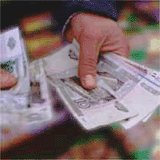Russia to face three economic crises and bright prospects
Russia should pursue an active industrial policy in order to avoid economic crises and develop in the most balanced way
Center of Macroeconomic Analysis and Short-term Prognosis has recently released a report titled "Long-term trends of the Russian economy." Economic crises forecast in the report sparked the interest of the press and public. The authors of the report predict three crises which by a curious coincidence should happen at the time of election campaigns. 
The document contains a full description of various development trends for the world and Russian economies for the next 10-15 years. It even has figures forecast for four main scenarios.
However, the report can be hardly regarded an economic forecast. It looks more like a manifesto of a group of state-oriented economists and politicians in the Russian government. The group is becoming an influential force in the government. The authors conclude that Russia should pursue an active industrial policy in order to avoid economic crises and develop in the most balanced way. The industrial policy should include large-scale government investments and moderate protectionism in foreign trade.
According to authors of the report, a social crisis will break out in Russia in 2007-2008. The crisis will stem out of public discontent with a high level of inequality. A crisis of infrastructure is expected in Russia in 2011-2012 due to massive decommissioning of infrastructure facilities and housing stock. And, finally, a third crisis will be caused by depletion of some natural resources, which bring about the need for economic restructuring. It is obvious that all those crises can be avoided or minimized by applying a sensible state policy. That is why the picture is not so black as may appear. On the contrary, the report is quite optimistic in terms of Russia's economic development.
The reports consider four scenarios of long-term economic growth. The most optimistic scenario requires an ideal industrial policy pursued by the state. The most pessimistic one becomes a reality provided that the state does nothing. Russia's annual GDP will grow by four-six percent no matter which of the scenarios is in place. The growth rate is probably not enough to double GDP every year. However, the rate is quite solid and sustainable by international standards, it will enable Russia to catch up with the developed nations in the long run. In case of the last scenario, the depletion of natural resources in 2015-2015 will decrease annual growth to one-two percent. However, GDP is not expected to drop sharply due to growth rate decrease.
The reasons of economic growth lie at the micro-level
We should find a reason behind Russia's economic growth during the last seven years if we want to get to the bottom of the matter. The authors of the report share the most popular viewpoint on the issue, which says that the devaluation of the ruble triggered economic growth in Russia during 1999-2000. Russian-made goods became cheaper than the imported ones. Then soaring oil prices kept the Russian economy going upwards. The point of view is not entirely wrong though it fails to notice some internal processes that contributed to the efficiency of external factors e.g. the ruble devaluation and high oil prices. Indeed, the 1998 devaluation of the ruble broke down overvaluation of the currency, an important microeconomic obstacle to economic growth. But the financial collapse had one more impact on the economy. Many companies launched tough restructuring programs because the managers lost their faith in infinite power of the state.
The first redistribution of assets in the Russian economy had been largely brought to an end by that time, another positive factor. Good governance of the existing assets became a more profitable development strategy than full concentration of attention on the seizure of new assets.
High oil prices and macroeconomic stability also contributed to growth of companies' own resources. In later period, the world macroeconomic stability made it possible for major to encourage inward investment.
Nowadays high oil prices have a little impact on the situation in natural resources sectors where political risks are high and infrastructure restrictions are tight. On the contrary, the sectors producing consumer goods are growing dynamically. And high oil prices keep the demand for consumer goods on the increase. Only the companies that produce relatively quality products can survive. The importance of quality stimulates businessmen to introduce innovations. A study conducted by the Moscow Carnegie Center shows that about 50 percent of Russian enterprises are involved in innovational activities. The majority of them intend to continue and expand their innovational activities.
As a matter of fact, it is not devaluation or high oil prices that brought out these structural changes. They spring from the reforms launched in the 1990s. The implementation of the reforms were successfully continued during the first term of President Putin. By all appearances, the processes of inertia are still standing as far as structural changes are concerned. That is the reason why the deterioration of institutional climate had a very little impact on economicgrowth and development. The conclusion of the report regarding the prospects for Russia's economic development does not appear far too optimistic. The report says that Russia will be able to maintain a relatively high rate of economic growth for another 10 years by running only on inertia. A sensible policy of the state could significantly accelerate the restructuring processes and offer additional stimuli to owners of business in terms of production development. Fast economic development is quite possible even if the state takes a neutral stance on the economic issues.
Proposals regarding the state
There are two options the state can take for exerting negative influence on the economy. The first one features the new elite getting a hold on assets. Many articles and books have been written on the subject. Hopefully, the redistribution of assets will not reach the proportions last seen in the 1990s, otherwise the Russian economy will plunge into chaos. A growing number of contract killings reported over the last few months makes one recall that sinister time of the Russian history.
Russian government fails to do well its regular work while assuming more duties. Poor efficiency of the state apparatus along with corruption is one of the reasons why there are so many go-betweens in Russia. The worsening of the infrastructure and housing stock is mostly due to management faults.
The report by the Center of Macroeconomic Analysis and Short-term Prognosis is based on the premise that the state will become an active economic player and its work will flawless in terms of efficiency. The efficiency of state institutions supposed in the report is quite far-fetched. It would be interesting to look through the data showing numerous functions of the state, which are poorly executed anyway. Perhaps in this case Russia's economic growth will be even lower than that mentioned in the worst scenario of the report.
Subscribe to Pravda.Ru Telegram channel, Facebook, RSS!





